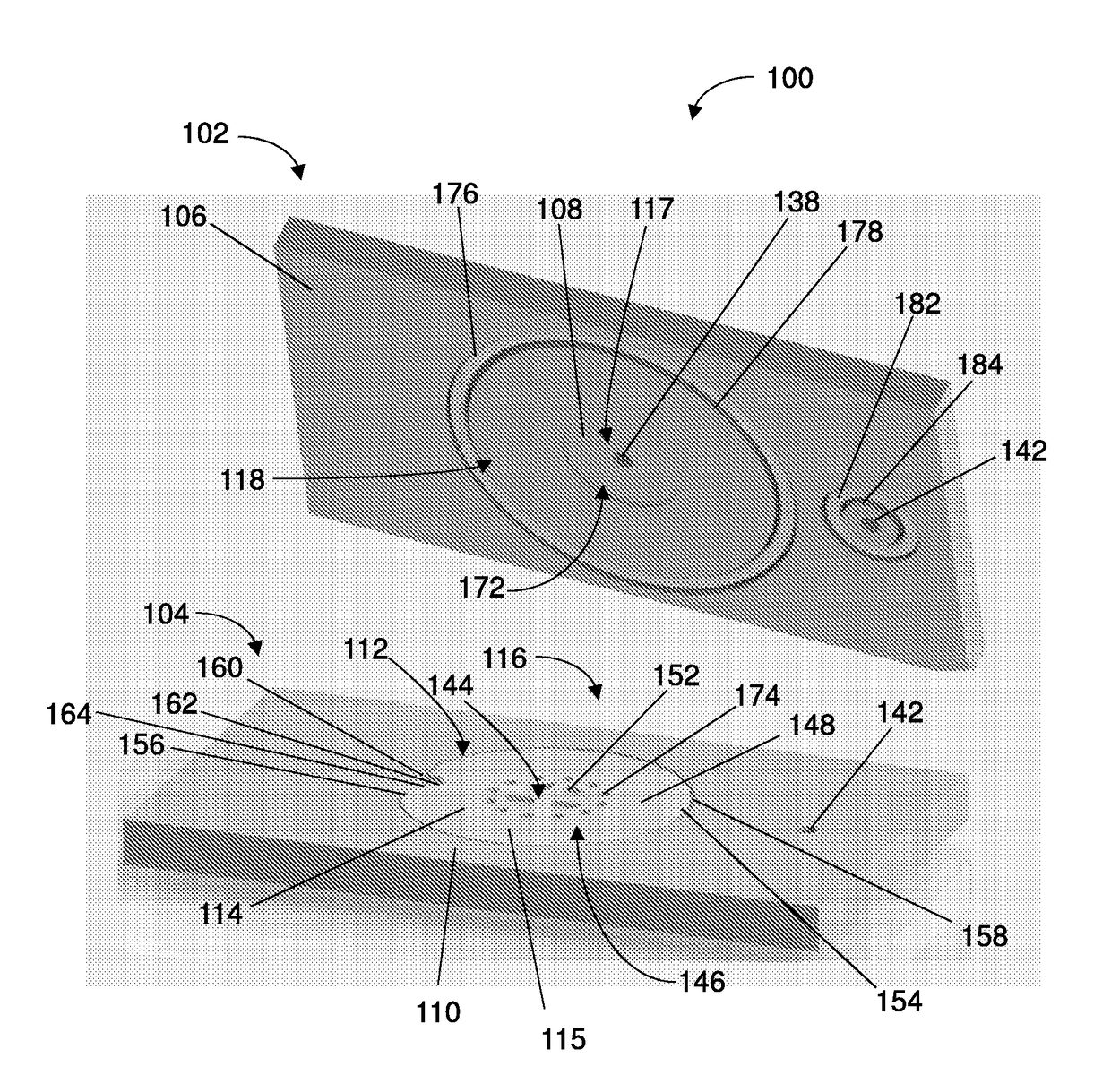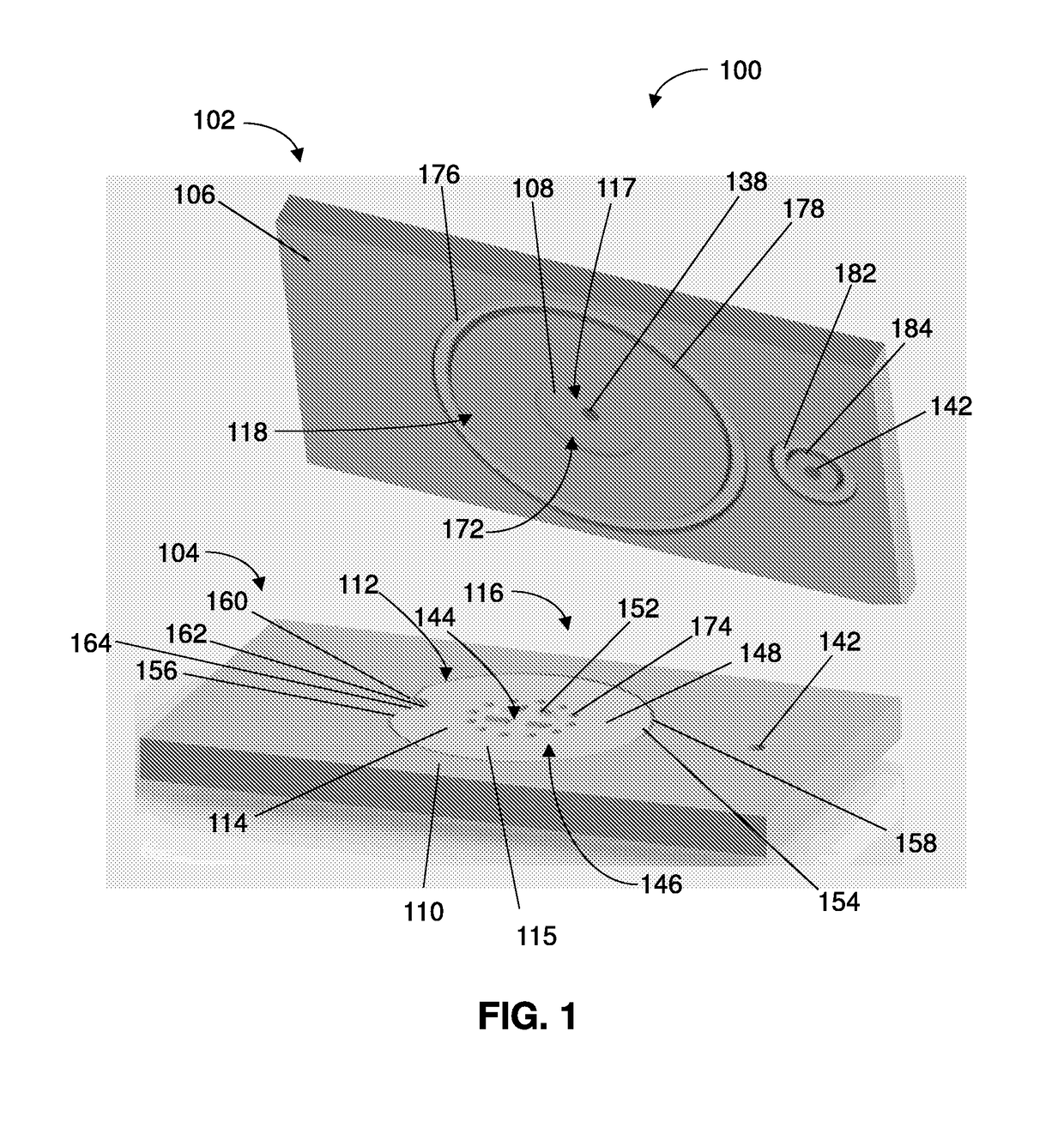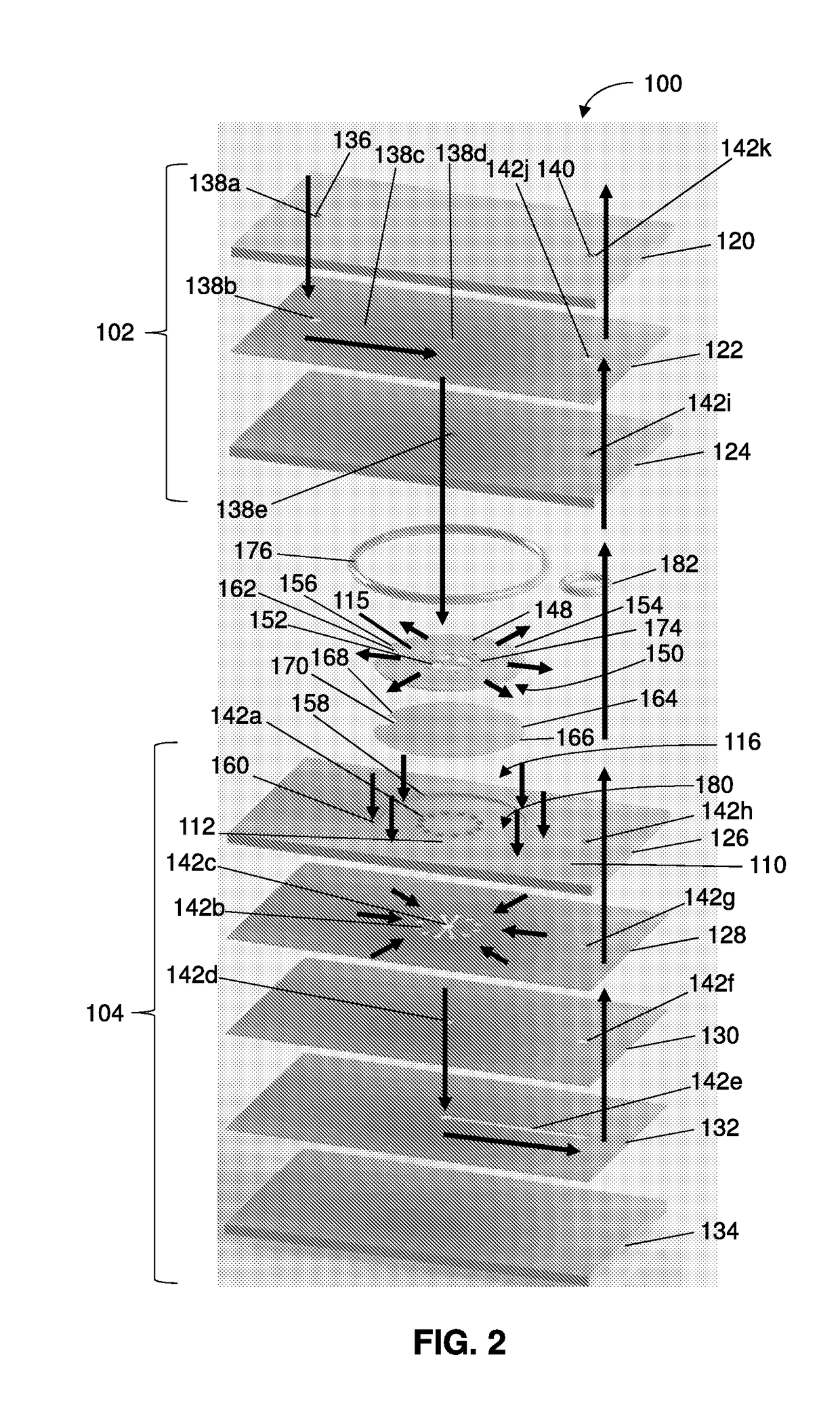Cartridge-based system for long term culture of cell clusters
a cartridge-based, long-term culture technology, applied in biochemistry apparatus and processes, instruments, specific use bioreactors/fermenters, etc., can solve the problems of insufficient recapture of the vitro test system, inability to accurately represent human biology, and failure of clinical trials of drug candidates validated in animal or in vitro models. to achieve the effect of promoting cell viability and functionality
- Summary
- Abstract
- Description
- Claims
- Application Information
AI Technical Summary
Benefits of technology
Problems solved by technology
Method used
Image
Examples
example 1
on of Cartridges, Housings, and Holders
[0367]Fabrication of a first generation of example cartridges involved laser cutting a few cartridge bodies out of a 254 μm thick polycarbonate sheet, and then subsequently manually bonding each cartridge body to a 24 μm thick membrane having 1 μm pore size and 2*106 pores / cm2. However, this approach was limited in manufacturing capacity and the wells were not sufficiently deep.
[0368]A second generation of example cartridges were fabricated from a 372 μm thick sheet of polycarbonate to provide deeper wells for holding cells. Further, the laser cutting was divided into two sessions, one for forming the inner quadrants to be used as wells prior to bonding to the membrane, and a second session for forming the outer channels and cutting the outer forder / perimeter of the cartridge body and filter after the materials for cartridge body and filter were bonded together. First, the inner well quadrant patterns were laser cut out of a 109 mm×109 mm squar...
example 2
ce of a Mature and Functional Adult Human Beta Cell Phenotype for Long Periods of Time in Culture in the Cartridges and Devices of the Invention
[0372]One approach for housing and culturing SC-beta cell clusters in an exemplary cartridge based fluidics system, e.g., microfluidics system, as described herein may include hydrogel macroencapsulation (see, e.g., FIG. 14A). Initial results of cultured macroencapsulated SC-beta cell clusters suggested that cell viability may not remain optimal after extended periods of time in culture. Less than optimal viability of such macroencapsulated cell clusters after extended periods of time may be due to cell necrosis at the center of the cell clusters as a result of insufficient oxygen transport caused by, e.g., a lack of control of the cell cluster position within the hydrogel.
[0373]One alternative, hydrogel microencapsulation of SC-beta cell clusters in an exemplary cartridge based fluidics system, e.g., microfluidics system, as described herei...
example 3
fluidics Systems Comprising a Cartridge of the Invention Permit Improved Oxygenation and Improved Glucose Metabolism of Islet Cells Cultured Therein
[0375]A COMSOL model was developed to validate the design of the cartridge chip by showing improved perfusion of the cells. This particular model was devised for an application of islet cells, using published parameter values for oxygen and glucose metabolism of islets.
[0376]A simple proof of concept simulation was first conducted to demonstrate one of the core principles of the microfluidic design of the cartridge chip. In this simulation, five spherical islets of diameter 250 μm encased in a 125 μm thick hydrogel shell were placed within a 10.5 mm×10.5 mm×572 μm (L×W×D) channel and subjected to flow either sequentially (i.e. islets receiving flow one after another) or in parallel (i.e. islets receiving fresh flow simultaneously). The model was assessed for steady state glucose and oxygen concentrations in each of the two cases at a vol...
PUM
| Property | Measurement | Unit |
|---|---|---|
| thickness | aaaaa | aaaaa |
| thickness | aaaaa | aaaaa |
| elastic modulus | aaaaa | aaaaa |
Abstract
Description
Claims
Application Information
 Login to View More
Login to View More - R&D
- Intellectual Property
- Life Sciences
- Materials
- Tech Scout
- Unparalleled Data Quality
- Higher Quality Content
- 60% Fewer Hallucinations
Browse by: Latest US Patents, China's latest patents, Technical Efficacy Thesaurus, Application Domain, Technology Topic, Popular Technical Reports.
© 2025 PatSnap. All rights reserved.Legal|Privacy policy|Modern Slavery Act Transparency Statement|Sitemap|About US| Contact US: help@patsnap.com



